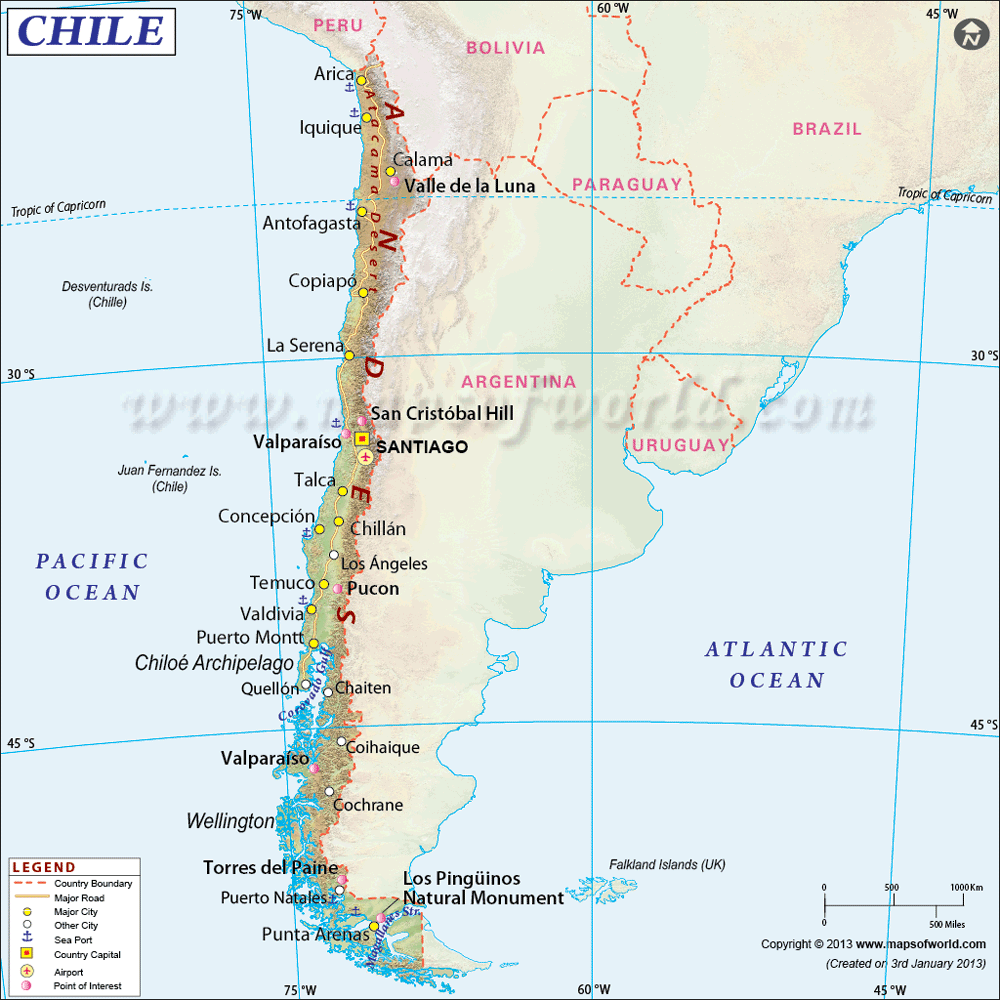
Updated 7/6/17, 9/6/18
High in the plains of the Atacama desert region of northern Chile near the Bolivian/Argentinian border lies an inhospitable area where the oxygen is thin, where peaceful llama-like creatures called vicunas wander slowly about looking for scant blades of grass to eat, and where sculpted red clay crumbles below your feet. It is an area so hostile and remote that NASA comes here when they need to test the equipment they want to send to Mars. No reasonable person would want to live here. But astronomers, it is commonly noted, are not normal people. This is, quite simply, the most beautiful place on Earth. It is an area high above any of the ordinary intrusions of mankind, where stars shine boldly all the way down to the horizon (there is no local Chilean term for "twinkling star") and where astronomers can study the night sky unencumbered for over 300 nights each year.
I went to Chile in June of 2017 on a grant from the National Science Foundation to tour the astronomical observatories. Nine of us were selected from the United States to participate in ACEAP (Astronomy in Chile Educator Ambassadors Program) which is a collaboration with AUI (Associated Universities, Inc,) NRAO (National Radio Astronomy Observatory,) NOAO (National Optical Astronomy Observatory,) and Gemini Observatory. The Program brings amateur astronomers, planetarium personnel, and K-16 formal and informal astronomy educators to US astronomy facilities in Chile. While at these facilities, ACEAP Ambassadors receive extensive training about the instruments, the science, data products, and communicating science, technology, engineering, and mathematics (STEM) concepts.
Among our group were several PhDs, an associate editor of Astronomy magazine, several accomplished amateurs, and two other astrophotographers. I felt honored to have been selected to tour in this august company. The ten days were so jam packed I barely had time for sleep. There were three flights within Chile itself, and I rode in more vans, trucks, and buses than I can count. What's more, I brought some astro-imaging equipment with me, which further cut into the scant time I desperately needed to rest. But this was the opportunity of a lifetime and I was determined to make the most of the trip.
1) Introduction - Ed Goes to Chile! (this page)
2) The cities, towns, and villages - Santiago, La Serena, and San Pedro
3) The observatories and scientific installations (Part 1)
3a) The observatories and scientific installations (Part 2)
About Chile: The Republic of Chile (pop. ~18 million) is a South American country occupying a long strip of land with the Andes mountains to the east and the Pacific Ocean to the west. It measures over 2600 miles in length but only a scant 217 miles at its widest point. The length of the country exceeds the width of the moon (~2160 miles.) For comparison, the continental United States only measures about 1950 miles. Due to its huge length, it is hard to classify a region or a people as prototypically "Chilean." In the capital region of Santiago, for example, the people appear to be typically "Latin" but move north or south from there and ethnicities become more complicated to classify. Many Germans settled in the southern part of the country so it is not unusual to see Chileans in this region with blond hair and blue eyes. In the northern part of the country (where we spent a great deal of time) the people appear to be more European than Latin. Chile is by some measures the most prosperous country in South America and Santiago is one of the largest cities on the continent.

(Image courtesy of Maps of the World)
Santiago was our landing point. After getting situated, we flew to the coastal town of La Serena. La Serena is the jumping off point to get to Gemini and CTIO. Finally, we flew to Calama (northern part of the map.) Calama is about 60 miles from ALMA, the famous radio astronomy array at 16,700 feet.
Click on the above to see the various aspects of this trip.
-Ed